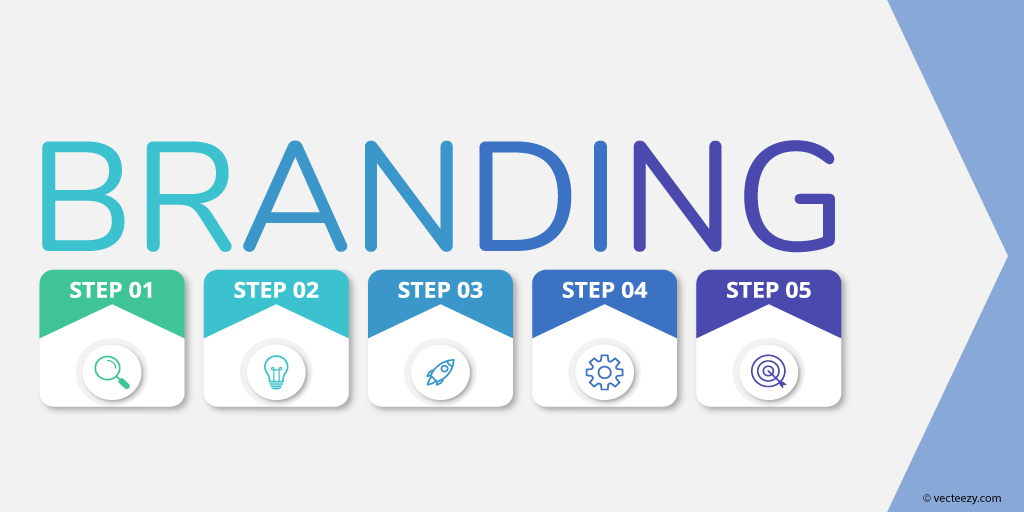In today’s competitive job market, differentiating your organization is more crucial than ever. Developing a strong employer brand is key, not just for attracting elite talent but also for increasing employee loyalty and engagement. A solid employer brand not only draws talent but also significantly lowers hiring costs—by up to 50%—and reduces turnover rates by 28%, as per LinkedIn’s 2020 report. Embracing strategies that showcase your unique employer value can lead to a more dedicated and satisfied workforce, proving that a well-defined employer brand is indispensable for both attraction and retention.
Here are the 5 steps, any successful employer should follow to improve its branding.
- Defining Your Employer Value Proposition (EVP) involves identifying and articulating the unique attributes and benefits that your company offers its employees. This step is foundational in distinguishing your organization in the competitive job market. It’s essential to ensure that your EVP genuinely reflects the experiences and values of your organization and resonates with both current employees and potential candidates. An impactful EVP extends beyond financial compensation, encompassing elements like company culture, career development opportunities, and the impact of employees’ work on the business and society.
Microsoft’s EVP focuses on empowering every person and organization on the planet to achieve more. This message, which underscores the company’s culture of innovation and inclusion, is consistently communicated across its recruitment materials and internal communications, making it a compelling proposition for prospective employees. - Assessing Current Perception requires a systematic approach to gathering insights from employees, candidates, and external audiences about how your brand is viewed. This could involve surveys, social media monitoring, and analyzing feedback from employee exit interviews. The objective is to identify discrepancies between the desired and actual perceptions of your employer brand and to understand the strengths and areas for improvement.
Dell Technologies leverages social media listening tools and employee feedback mechanisms to gauge its employer brand perception. By addressing feedback and openly communicating changes, Dell continuously enhances its reputation as an employer. - Enhancing Candidate Experience ensures that every touchpoint with potential employees positively reflects your employer brand, from the initial job advertisement to the final onboarding steps. A focus on transparent communication, respectful interactions, and a seamless application process can significantly impact candidates’ perceptions of your company.
Airbnb offers candidates a unique insight into its culture and values right from the recruitment process, incorporating employee testimonials and providing detailed expectations for each role. Their approach ensures that candidates have a positive experience that aligns with Airbnb’s employer brand. - Developing Compelling Employer Branding Content involves creating and disseminating authentic materials that convey the essence of working at your company. This content can range from behind-the-scenes videos and employee testimonials to detailed descriptions of your work environment and values. The aim is to showcase the unique aspects of your company culture and the experiences of your employees in a way that is engaging and relatable.
Google uses a variety of content forms, including videos and blogs, to highlight its innovative culture, diversity initiatives, and the impactful projects its teams are working on. This content strategy not only attracts potential candidates but also builds a strong sense of pride among current employees. - Empowering employee advocacy transforms your workforce into brand champions for your organization. Encouraging staff to share their successes and positive experiences broadens the impact of your brand’s messaging through their personal networks. A strategic approach to achieve this involves deploying a digital credentialing system to acknowledge and reward employee milestones.
BCdiploma provides top-tier corporations with innovative digital badge and certificate solutions. Remarkably, an average of 60% of employees broadcast their achievements on social media, highlighting their company’s commitment to fostering an environment of innovation and professional growth. This active participation not only elevates the company’s stature as a preferred employer but also actively engages employees in a meaningful way, promoting a sense of belonging and achievement. By implementing such forward-thinking strategies, companies can effectively harness the power of their workforce to project a compelling employer brand that attracts and retains top talent.
By implementing these detailed practices, corporates can significantly improve their employer branding, attracting top talent while nurturing a positive and engaging work environment. Each of these steps, backed by examples from well-known corporations, highlights the importance of authenticity, engagement, and strategic communication in building a strong employer brand.
Learn more
- How to Retain and Train Your Talent with Digital Badges?
- Digital Badges and Skill Pathways: Engage Your Talent!
- Developing Top-Tier Corporate Training Program: Best Practices
- Boosting Engagement in Corporate Training Programs: Best Practices
- Best practices to reskill and upskill your employees
- Attracting and Recruiting Top Talent: Effective Best Practices
